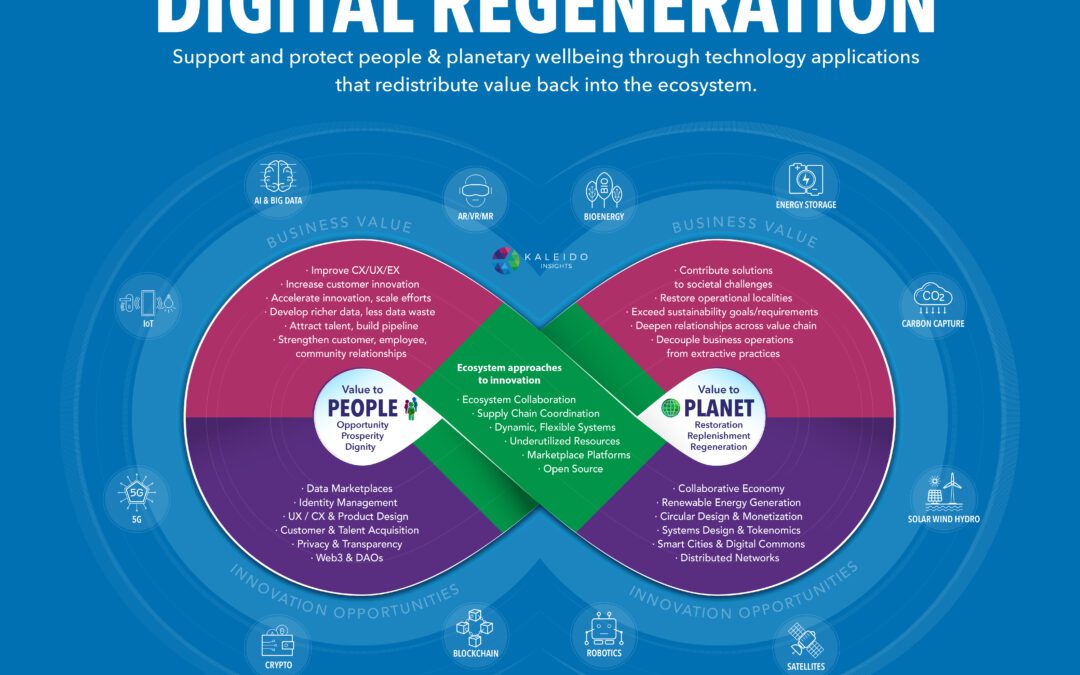Today’s most innovative organizations are approaching business strategy differently: while “sustainable” businesses simply try to curb their negative impacts, regenerative businesses structure the entire organization as harmonious with living systems (not in spite of them). This leads to intentionally designing operations, technology, and finance models to increase positive impacts across stakeholders, including customers, employees, communities and the environment.
At Kaleido Insights, we define this next phase of digital transformation as “digital regeneration”:
Digital Regeneration is a cultural, technological, and operational shift in which organizations align the purpose, structure, and scalability of business with economic, societal, and environmental benefit.
Data, technologies, and digital infrastructure are crucial to orchestrate and scale regenerative business models, customer experiences, and supply chains in concert with people and the planet. They are also essential to driving ecosystem-based approaches to innovation. Kaleido Insights has developed the below framework to help organizations visualize this nexus of regenerative business and digital innovation.

The technologies and innovation opportunities span every aspect of this transformation; the imperative is connecting the time and resources organizations have spent on digital transformation. For years, digital transformation has been a synonym for “digitizing” analog processes, using data to drive efficiency gains, cost optimization, and novel customer experiences. But the world has changed, and so has the orientation for business and technological innovation.
As environmental, economic, health, social, and trust crises have compounded globally in recent years, leaders are confronted with a new reality: what were historically considered “externalities” must become internalized strategic drivers to stay resilient.
This realization is already transforming how many organizations are investing, particularly evidenced in the recent surge in environmental, social, and corporate governance (ESG) funding. Yet, treating such crises as a cost center, something to offset, or worse, relegated to singular business function misses the transformational opportunity.
How can companies accelerate their own regenerative transformation?
The single most important step leaders can take is tapping into the regenerative potential of their industry and value chains. We are tracking enterprise case studies, disruptive start-ups and technological configurations, novel collaborations, and best practices of digital regeneration across more than a dozen sectors. Many organizations and funds pursuing these models are already showing stronger returns, customer retention, reduced operational risks, and growth. Through hundreds of interviews with digital, innovation, and ESG leaders, we have developed a service to support businesses’ internal assessment and strategic planning to accelerate this shift, and leverage data and technology in these designs.
Like digital transformation, regenerative business begins with mindset: a re-orientation from thinking of business as an entity, to business as a system; one which both relies on, and contributes to the ecosystems of which it is a part.

